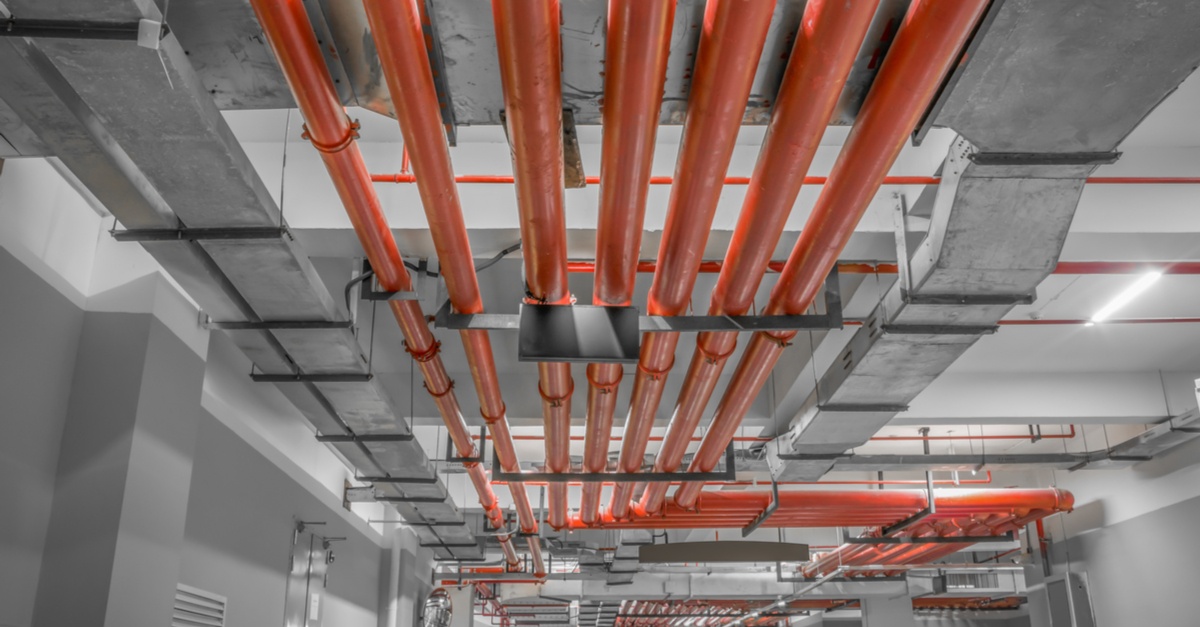Planning a New Construction? How to Avoid or Minimize Local Law 26 Requirements

Local Law 26 of 2004 makes sprinkler systems mandatory for office buildings and other business occupancies if the construction is at least 100 feet tall. If your building is covered by LL26 there is no way to avoid the sprinkler installation, but projects still in the design and planning phase may be able to avoid it with smart design choices, or at least minimize costs. In simple terms, if you design your building so that it does not meet the description in the LL26 document, compliance is not mandatory. Of course, there are cases where this is not possible.
Keep in mind that fire protection is very important to make buildings safe for occupants, but you have more design freedom if a property is not under the scope of LL26. A sprinkler system built according to LL26 is expensive and takes time - this can delay project commissioning. If you are developing commercial space for rent, the extra requirements can also delay profits.
Basically, LL26 makes sprinkler systems mandatory if you meet two conditions:
- Height of at least 100 feet.
- Classified as a Group E business occupancy, considering the classification system that applied in 2004 (Group E is now Education, while B is Business).
Therefore, you can avoid Local Law 26 requirements by developing a property that is below 100 feet or not classified as Group E (2004 definition). Real estate developers who are still deciding what type of property to build can consider many options.
Consider a Low-Rise Development
There is a high-rise skyscraper boom in NYC, and if you are considering a project of this type it is best to plan for LL26 from the start. However, low-rise constructions are not covered by LL26, and fire protection requirements are generally based on floor area and occupant load. Low-rise residential developers need not worry about sprinklers if their constructions meet all the following conditions:
- One- or two-family dwelling, or townhouses
- No more than three stories high
- Separate means of egress for each dwelling
Low-rise residential projects (no more than three stories) are also eligible for incentives from the NY State Energy Research and Development Authority (NYSERDA). The conditions to be eligible for funding are the following:
- New constructions must be developed according to the New York ENERGY STAR Certified Home designation.
- For gut rehabilitation in existing projects, the New York Energy $mart designation applies.
The only limitation of low-rise projects is that they use more land, and can become financially unfeasible in places like Manhattan. However, consider that the NYSERDA program has statewide coverage, so you don’t have to build the project strictly within NYC to be eligible for funding.
Alternative Building Occupancies
Although fire protection requirements apply for all occupancy groups in NYC, these can be more or less demanding depending on the type of project. In many cases, it is possible to optimize or avoid some costs through a smart distribution of building areas. The best recommendation is to work with qualified designers - fire protection requirements are notorious for being among the most demanding in the world.
Regardless of the type of project you choose to develop, get all project teams involved from the start. Drastic cost reductions can be achieved for building systems in general, not only sprinkler systems. MEP design software can be of great help, since overlapping equipment and specifications become easier to detect.

Anuj Srivastava
Anuj Srivastava is a principal partner at NY Engineers. He is known for his MEP franchise market knowledge. Anuj is currently leading a team of 100+ MEP/FP engineers and has successfully led over 1500 franchise projects in the US.
Related Posts
Join 15,000+ Fellow Architects and Contractors
Get expert engineering tips straight to your inbox. Subscribe to the NY Engineers Blog below.


